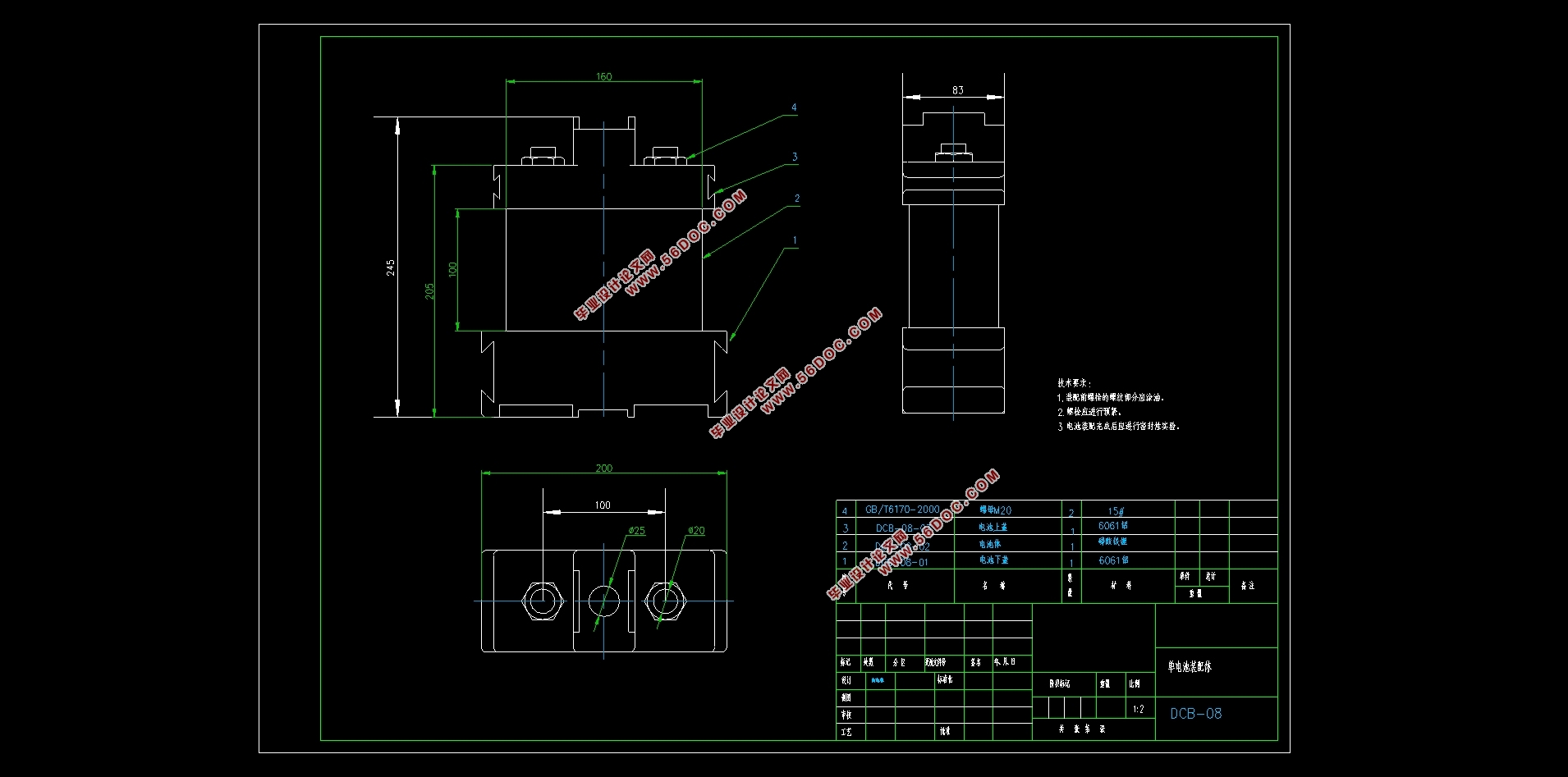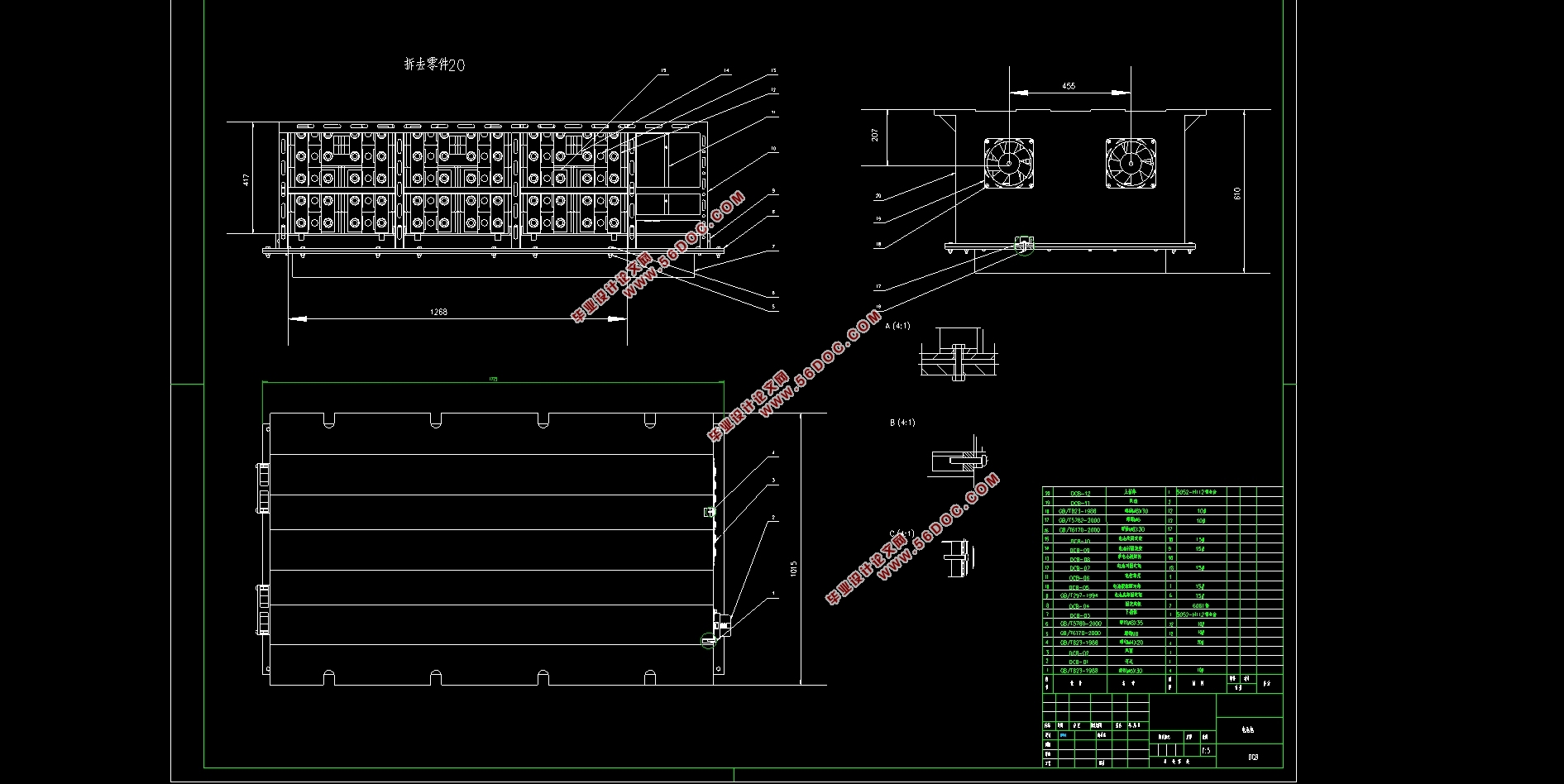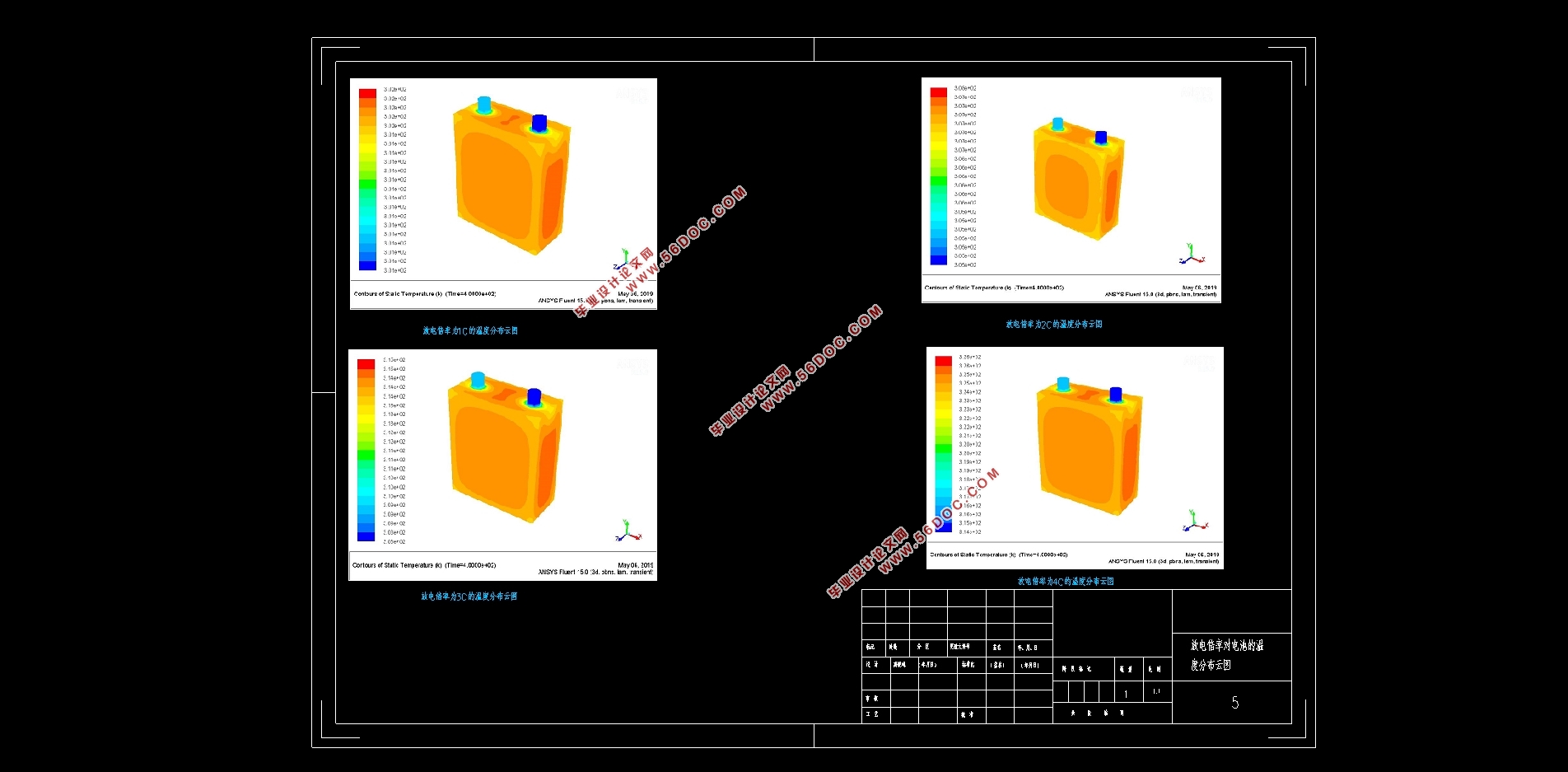车用动力锂电池的热管理模型设计及仿真(含CAD图)(任务书,开题报告,外文翻译,论文说明书17000字,CAD图12张)
摘要
新能源危机与环境问题已成为目前人们最关注的问题,新能源汽车成为全球汽车产业发展主流的研究方向。因为锂电池具有较好的能量密度、安全性和循环性,所以锂离子电池可以满足电动汽车的需求。然而电池的使用性能、循环寿命和安全性能受到了电池温度的影响。所以控制好电池的温度是目前新能源汽车的关键技术之一。
本文研究了方形锂离子电池的生热及其传热原理,并运用Fluent软件分析了电池单体在自然对流条件下的温升。为了强化电池散热结构的散热能力,提高电池组的温度一致性,运用Fluent软件对电池组进行稳态的数值仿真计算,并从流体速度、电池排列方式、单体电池间距和放电倍率四个方面对电池组温度分布规律进行探究,通过分析表明,流体速度与电池组温度呈正相关,电池间距和放电倍率与电池组温度呈负相关,三角形排列方式降温效果最好。
关键词:电动汽车;方形锂离子电池;流体力学;热管理
Abstract
New energy crisis and environmental problems have become the most concerned issues at present, and new energy vehicles have become the mainstream research direction of global automobile industry development. Because lithium batteries have good energy density, safety and cycling, lithium ion batteries can meet the needs of electric vehicles. However, battery performance, cycle life and safety are affected by battery temperature. Therefore, controlling the battery temperature is one of the key technologies of new energy vehicles.
In this paper, the heat generation and heat transfer principle of square lithium ion battery were studied, and the temperature rise of single battery under natural convection was analyzed by Fluent software. To enhance the heat dissipation capacity of battery cooling structure, raise the temperature of the battery pack consistency, using the Fluent software to the battery pack for steady-state numerical simulation calculation, and the fluid velocity, spacing and arrangement, monomer battery discharge ratio of battery temperature distribution of the four aspects, through the analysis shows that fluid velocity and temperature of the battery were positively correlated, spacing and battery discharge ratio and negatively correlated to the temperature of the battery pack, triangle arrangement best cooling effect.
Key words: electric vehicle; Square lithium ion battery; Fluid mechanics; Thermal management




目录
第一章 绪论 1
1.1研究和背景意义 1
1.2单电池热模型研究现状 1
1.3电池组热管理系统研究现状 3
1.3.1气体冷却热管理系统研究现状 4
1.3.2液体冷却热管理研究现状 5
1.3.3相变冷却热管理研究现状 5
1.3.4热管冷却热管理研究现状 6
1.4本文主要研究内容 6
第二章 锂离子电池热特性的分析 7
2.1锂电池工作原理 7
2.2 锂电池的生热以及传热原理 8
2.2.1 动力锂电池的生热原理 8
2.2.2 锂电池传热机理 9
本章小结 10
第三章 锂离子电池热模型的建立 11
3.1 锂离子电池导热微分方程 11
3.2 锂离子电池热模型定解的确定 12
3.2.1初始条件 12
3.2.2边界条件 12
3.3锂离子电池热分析参数的确定 12
3.3.1平均密度 12
3.3.2比热容 13
3.3.3导热系数 13
3.3.4生热速率 14
本章小结 15
第四章 单体电池温度场数值分析 16
4.1 网格划分及仿真条件设置 16
4.1.1网格划分 16
4.1.2fluent仿真步骤设置 16
4.2放电倍率对电池温度分布的影响 19
4.3初始温度对电池温度分布的影响 20
本章小结 22
第五章 电池组温度场分析及仿真优化 23
5.1 电池组强制对流冷却模型温度仿真计算 23
5.1.1 电池组仿真模型的建立 23
5.1.2 黏性模型的选择 24
5.1.3 边界条件及求解器设置 25
5.1.4 仿真结果分析 26
5.2 电池组仿真结果分析及优化 27
5.2.1 流体速度对电池组温度的影响 27
5.2.2 电池排列方式对电池组温度的影响 28
5.2.3 单体电池间距对电池组温度的影响 29
5.2.4 放电倍率对电池组温度的影响 30
本章小结 31
第六章 结论与展望 33
参考文献 34
附录 36
致谢 37
|









